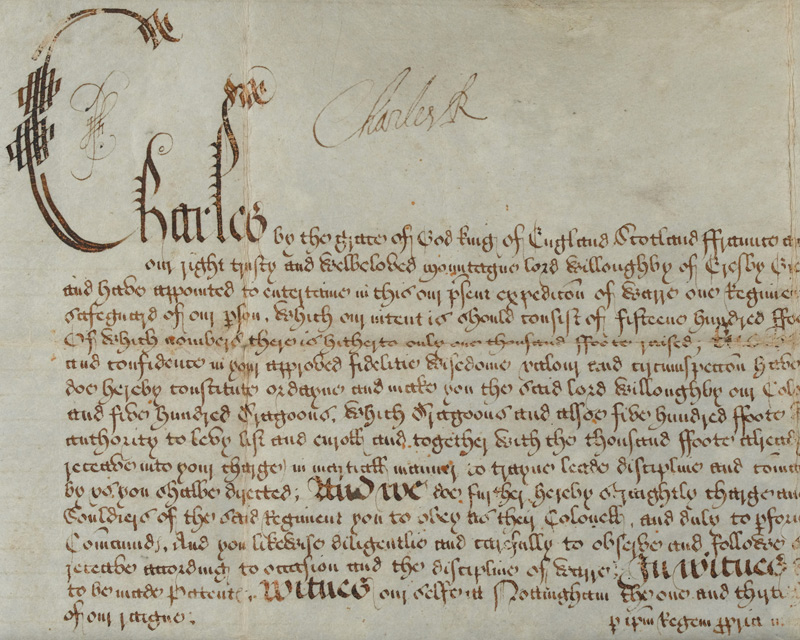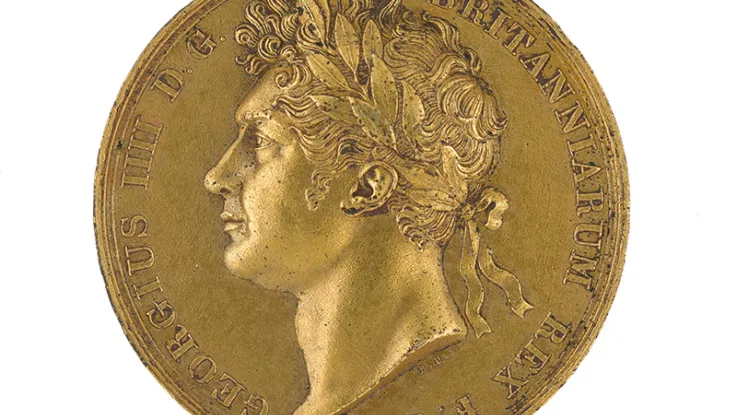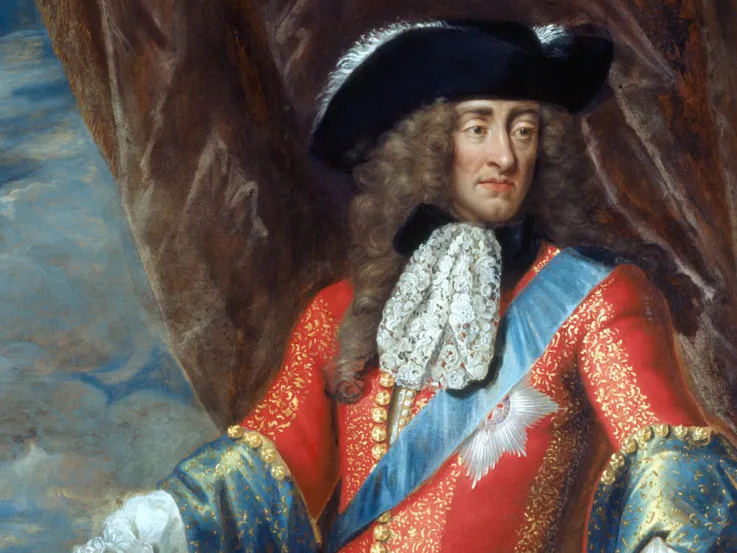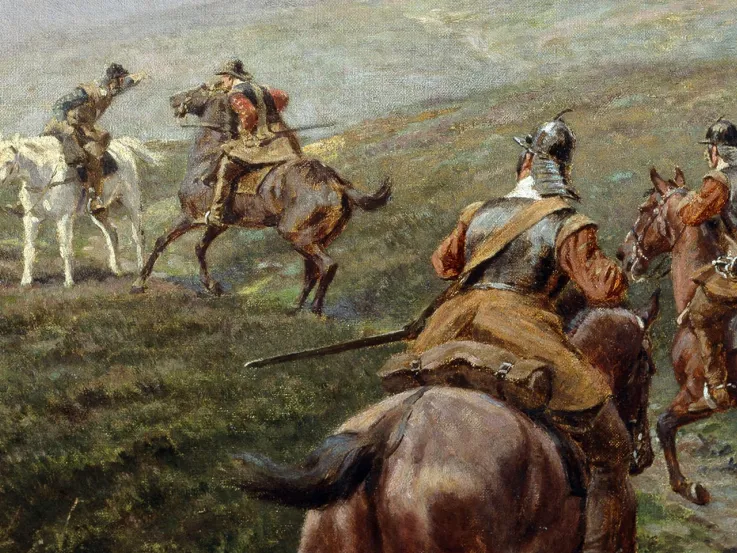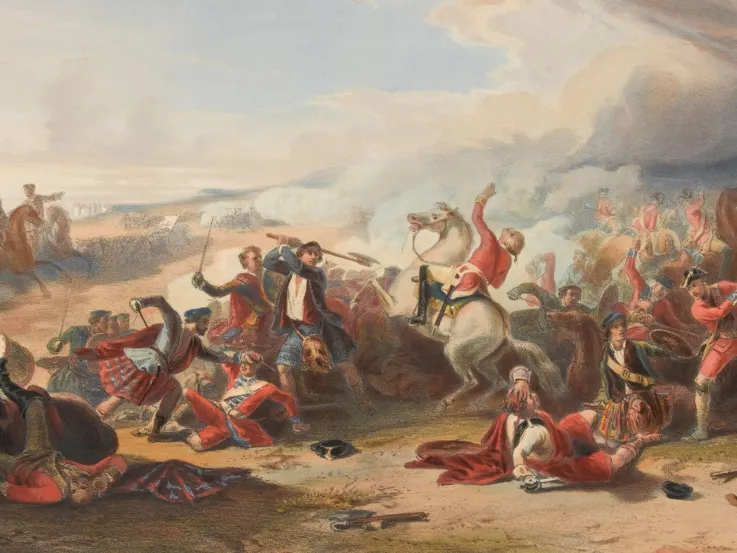Head of the Army
In 2022, King Charles III succeeded his mother, Queen Elizabeth II, as both Head of State and Head of the Armed Forces.
When soldiers join the British Army they swear an Oath of Allegiance not to the government of the day, but to the King and his successors. However, ultimate authority on the Army’s deployment and use rests with Parliament and ‘the people’.
The question of control
From the time of the Civil War (1642-51), questions around the limits of royal authority and control of the Army were hotly debated.
In 1689, Parliament introduced the Bill of Rights, which withdrew the monarch's right to suspend or implement laws without Parliamentary consent. It also passed the Mutiny Act, requiring annual Parliamentary approval for the continuation of a standing army.
To this day, the continuation of the British Army depends on annual Parliamentary consent.
Royals and the Regiment
The regiment or corps has been a key component of the British Army throughout its history.
The regimental system has its roots in the 17th century, when aristocrats and professional soldiers were commissioned by the monarch to recruit troops. Ranked as colonels, these men were responsible for raising and equipping their regiments.
On raising a regiment, an oath of allegiance to the monarch would be sworn. This gave the regiment a direct link to its sovereign. Indeed, the titles of many regiments have carried royal connotations.
This close relationship has continued over the years and covers many aspects of army life, including the presentation of regimental flags or colours.
Colours are emblazoned with a regiment's battle honours, awarded by the monarch to commemorate bravery on campaign. They remind soldiers of their loyalty and duty to their sovereign.
Colonel-in-Chief
Most British regiments have a member of the Royal Family as their colonel-in-chief.
Although serving no operational role, colonels-in-chief are kept informed of their regiment’s activities, pay visits to deployed troops, send messages of support, attend regimental dinners and take part in ceremonies.
Queen Elizabeth II was colonel-in-chief of 16 British Army regiments and corps, as well as many Commonwealth units. This created a close connection between these regiments and their monarch.
‘There's no way I'm going to put myself through Sandhurst and then sit on my arse back home while my boys are out fighting for their country.’Prince Harry — 2007
On active service
The last British monarch to lead troops in battle was King George II, at Dettingen in 1743. However, many members of the Royal Family have served in the Army since that time.
Prince George, 2nd Duke of Cambridge, was a cousin of Queen Victoria. He served in the Crimean War (1854-56) and was Commander-in-Chief of the Army for nearly 40 years. Prince Christian Victor, Victoria’s grandson, served on campaign in the Sudan and was an eyewitness of the Battle of Omdurman in 1898.
More recently, the Duke of Kent and Prince Michael of Kent both served as army officers for many years. Queen Elizabeth II served in the Auxiliary Territorial Service and Women’s Royal Army Corps in the 1940s.
Prince Harry is the latest in a long line of royal soldiers. He served in Afghanistan in 2007-08 as a Forward Air Controller, calling in air strikes on insurgent positions and patrolling in hostile territory. He later trained as an Apache helicopter pilot with the Army Air Corps.
Royal support for the Army
Members of the Royal Family support the Army in many different ways. They visit troops on active service, attend inspections and reviews, and serve as patrons of military charities.
They send gifts and messages of support to soldiers overseas. Indeed, Elizabeth II always referred to troops abroad in her Christmas message to the nation.
The practice of Royals visiting troops on active service was started by King George V during the First World War and continues to this day. In 1999, Prince Charles (now King Charles III) visited troops in Kosovo and in 2010 he went to Afghanistan.
The Royal Family also supports military charities. For example, the Forces in Mind Trust is supported by the Foundation of Prince William and Prince Harry.
Ceremonial
Public ceremonial occasions reinforce the links between the Army and the Sovereign. During Elizabeth II’s reign, there were hundreds of such events. The Army provides guards for royal palaces, and escorts for coronations, royal weddings, and other state occasions.
The Army escorted the carriage at the weddings of Prince Charles (now King Charles III) and Lady Diana Spencer (1981), and Prince William and Kate Middleton (2011). In the past, the Army also took part in the great spectacles of Empire, such as the State Durbars in India.
The Delhi Durbars
When the British ruled India, mass assemblies were held at Coronation Park in Delhi to celebrate the succession of the British monarch as Emperor or Empress of India. These events took place in 1877, 1903 and 1911.
At all three Delhi Durbars, the monarch - or their representative, the Viceroy of India - received homage from the officials of the Raj, and from the Indian ruling princes. Thousands of Indian and British soldiers also attended, taking part in parades and military reviews.
Trooping the Colour
The Sovereign’s Birthday Parade (also known as Trooping the Colour) is a highlight of the British ceremonial calendar, normally held in London in June each year.
The parade dates back to the 18th century, when the Colours of a unit were 'trooped' - or carried - down the ranks so that they could be seen and recognised by the soldiers. It has marked the sovereign's official birthday since 1748.
The ceremony is carried out by troops from the Household Division - consisting of Foot Guards, The King's Troop, Royal Horse Artillery and the Household Cavalry - on Horse Guards Parade in Whitehall.
The hundreds of soldiers who participate provide not only an impressive public spectacle, but also a reminder of the important link between the Sovereign and the Army.
Jubilees: Empire to Commonwealth
In 2012, Queen Elizabeth II celebrated her Diamond Jubilee. She became only the second British monarch, after Queen Victoria, to reach this 60-year milestone.
At the time of Victoria’s Diamond Jubilee in 1897, Britain was the world’s most powerful nation. Her extensive empire was protected by the world’s largest navy and an army of over 250,000 soldiers. When Elizabeth II came to the throne in 1952, Britain still ruled a large empire and the Army’s National Servicemen were deployed in nearly all corners of the world.
Elizabeth went on to celebrate a Platinum Jubilee in 2022. During the course of her 70-year reign, Britain’s empire became a Commonwealth of independent nations, and Britain itself a multicultural society.
But, in all this time, one thing has not changed: the personal connection between the British Army and its Sovereign. These are still the Sovereign’s soldiers.





